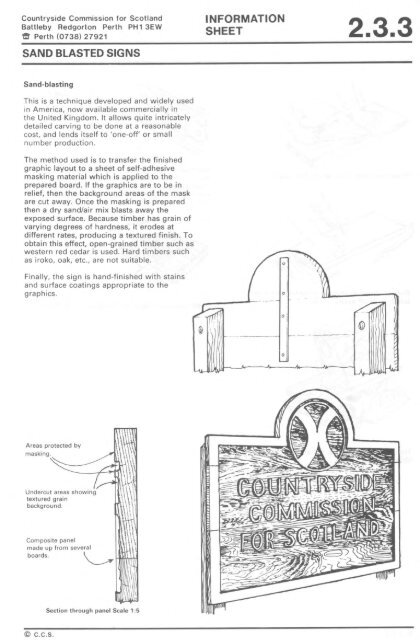information - Scottish Natural Heritage
information - Scottish Natural Heritage
information - Scottish Natural Heritage
Create successful ePaper yourself
Turn your PDF publications into a flip-book with our unique Google optimized e-Paper software.
Countryside Commission for Scotland<br />
Battleby Redgorton Perth PH1 3EW<br />
Perth (0738) 27921<br />
SAND BLASTED SIGNS<br />
Sand-blasting<br />
This is a technique developed and widely used<br />
in America, now available commercially in<br />
the United Kingdom. It allows quite intricately<br />
detailed carving to be done at a reasonable<br />
cost, and lends itself to 'one-off' or small<br />
number production.<br />
The method used is to transfer the finished<br />
graphic layout to a sheet of self-adhesive<br />
masking material which is applied to the<br />
prepared board. If the graphics are to be in<br />
relief, then the background areas of the mask<br />
are cut away. Once the masking is prepared<br />
then a dry sand/air mix blasts away the<br />
exposed surface. Because timber has grain of<br />
varying degrees of hardness, it erodes at<br />
different rates, producing a textured finish. To<br />
obtain this effect, open-grained timber such as<br />
western red cedar is used. Hard timbers such<br />
as iroko, oak, etc., are not suitable.<br />
Finally, the sign is hand-finished with stains<br />
and surface coatings appropriate to the<br />
graphics.<br />
Areas protected by<br />
masking<br />
Undercut areas showing<br />
textured grain<br />
background.<br />
Composite panel<br />
made up from several<br />
boards.<br />
© C.C.S.<br />
INFORMATION<br />
SHEET 2.3.3

















